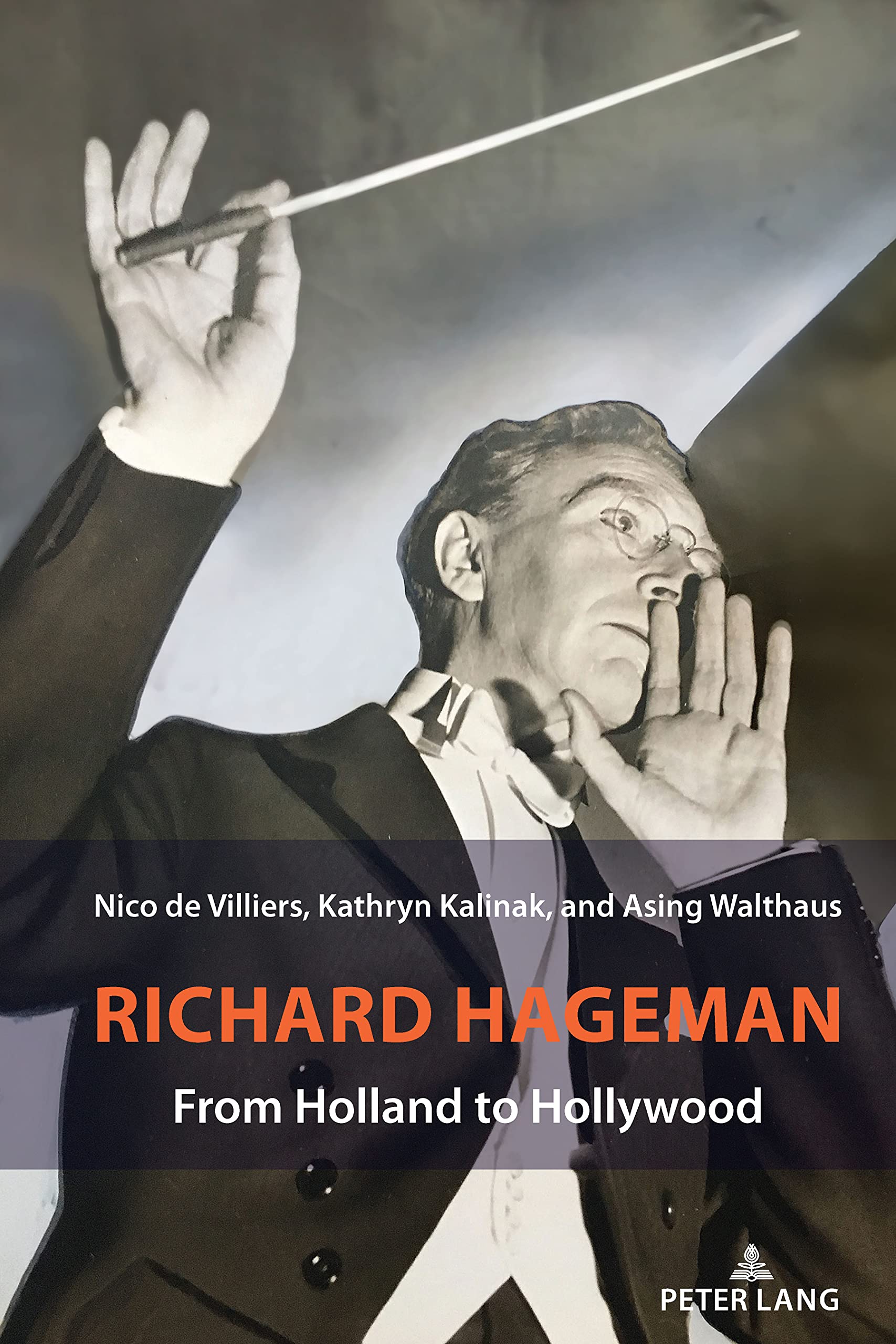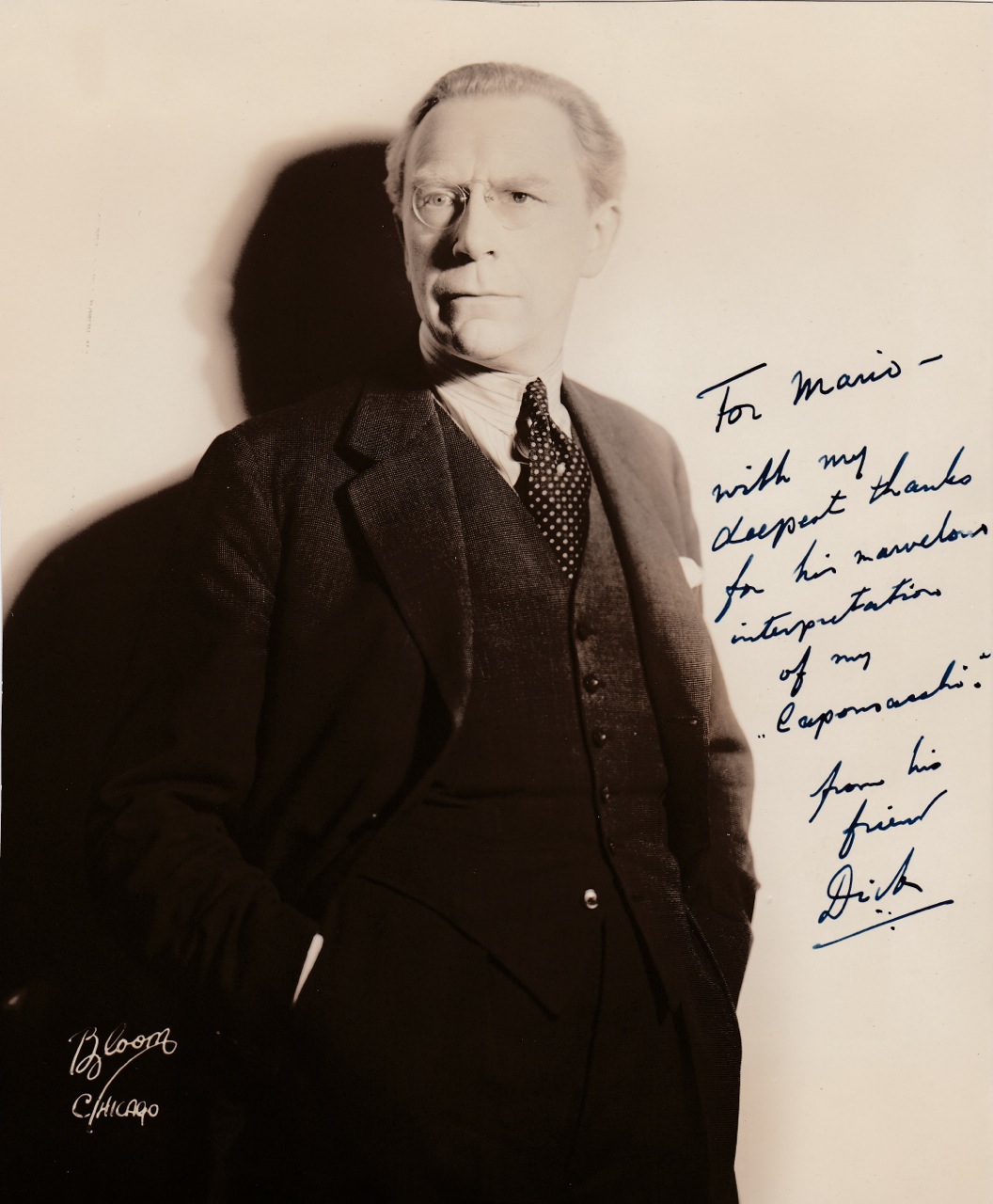
RICHARD HAGEMAN, from Holland to Hollywood by Nico de Villiers, Kathryn Kalinak, and Asing Walthaus

252 pp, click here for the publisher and details
All lovers of classical vocal art know the song “Do not go, my love” a setting of a Rabindranath Tagore poem and composed by Richard Hageman (1881-1966). Yet few -if any- know the American conductor was actually born and raised in Leeuwarden in the Netherlands . Hageman had quite a fascinating life and his life story has now been written – in English. There was already an admirable effort in a previous edition published in Hageman's homecountry (click here), but this new and definitive biography by far supersedes the previous work in detail of research.
A child prodigy he was already a concert pianist by the age of six. As a young man he was an accompanist for singers with the Amsterdam Royal Opera Company, of which he became the conductor in 1899. For a short time he was an accompanist in the singing studio of Mathilde Marchesi in Paris. He travelled to the United States in 1906 to accompany the French cabaret singer Yvette Guilbert on a national tour ‘performing for cowboys’ as he put it. Later he would also perform with the eccentric Florence Foster Jenkins. He stayed and eventually became an American citizen in 1926. A first application in 1921 was denied on grounds of "immoral character" all of it vividly recalled in the chapter "Rosina and the revolver".
Click here to listen to "Do not go my love" by Dino Borgioli
Click here to listen to Richard Tucker performing the song "Music I heard with you" as early as 1941
Hageman was a conductor and pianist for the Metropolitan Opera between 1914 and 1932, coach of the opera department at the Curtis Institute from 1925 to 1930, and a leading conductor of the Chicago Civic Opera and the Ravinia Park Opera for seven years. He was a guest director of orchestras like the Chicago, Philadelphia, and Los Angeles symphony orchestras. He conducted the Philadelphia Orchestra summer concerts for four years, and from 1938-1943 he conducted at the Hollywood Bowl summer concerts.[
He is known to the film community for his work as an actor and film score composer, most notably for his work on several John Ford films in the late 1930s. He shared an Academy Award for his score to Ford’s 1939 western Stagecoach . Hageman would continue to write musical scores for five more John Ford directed films consisting of “The Long Voyage home “ in 1940, “Fort Apache” in 1948, “Three Godfathers” also in 1948, “She Wore a Yellow Ribbon” in 1949, and “Wagon Master” in 1950. Hageman also had minor roles in eleven motion pictures, with the major role as opera conductor in the “Great Caruso”.
Hageman also composed music for stage plays, orchestra and chamber groups. But his major interest was in music for art songs and oratorio. During his entire musical career, he composed the music for as many as 69 art songs and an opera.
His 1931 opera Caponsacchi, first performed in Freiburg –Walter Felsenstein was the director! - with the title Tragödie in Arezzo in 1932, was staged at the Metropolitan Opera in 1937 with Mario Chamlee in the title role. (click here for the reviews) The authors provide a good analyses of the work. Regrettably there is no complete recording of the opera but a few excerpts (the carnival scene and two arias) from the music were recorded and can be downloaded from René Seghers's (the first pioneer on Hageman) Dutch operas website.
His "concert drama" The Crucible was performed in Los Angeles in 1943. While his large musical compositions are rarely heard today, a few of his art songs are well-known and highly regarded. His pièce de résistance "Do not go my love" was recorded by Marguerite d'Alvarez, Rose Bampton, Louis Graveure, Tudor Davies, Dino Borgioli, Lauritz Melchior, Jeanette MacDonald, Arthur Hacket, Zinka Milanov, Nance Grant, Roberta Alexander, Kiri Te Kanawa, Robert White and Thomas Hampson. Nico de Villiers is currently undertaking doctoral research which focusses on Hageman's art songs. This study will culminate in the recording of all of Hageman's songs and a commercial recording of a number of songs for the Toccata Classics label.
 (photo dedicated to Mario Chamlee, courtesy Charles Mintzer collection)
(photo dedicated to Mario Chamlee, courtesy Charles Mintzer collection)
Hageman married three times, three times a singer: his first wife threatened him with a gun, the second left him for an Italian duke, the third stayed with him until the end. He died in Beverley Hills, California on March 6, 1966 at the age of 84. He had begun his musical career in Europe, but was most productive after he came to the United States, probably because of the many opportunities that presented themselves though Hageman did consider a possible return to his Dutch hometown as late as 1954.
In ten chapters, an epilogue, a list of works and an index the writing trio South African born pianist Nico de Villiers, Kathruyn Kalinak and Dutch journalist Asing Walthaus unearthed a wealth of remarkable facts about Hageman from archives and newspapers. They also put the record straight on several aspects of Hageman’s life and musical legacy. Most interesting is the chapter discussing the song output by Hageman. A pity a discography was not included, a pity too that a couple of typos slipped in : I Pagliacci, Elisabeth Parkin is called a protégé of Nellie Melba on page 23, Mars McCormick (page 52), Desire Defrere (Désiré Defrère, page 74), Edit Maerker (page 96),....
The book is beautifully illustrated with rare photos, not only of Hageman but also of his colleagues, movie stills etc. The book also includes a survey of all his compositions including dates. I loved reading the book and it would make a perfect gift to any lover of vocal music, conductors or (film) music history.
The Richard Hageman Society regularly shares new material via the social media, click here for their facebook page
Rudi van den Bulck, February 2022